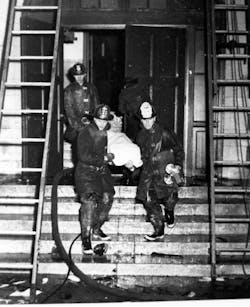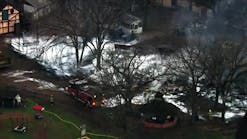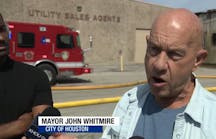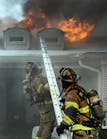It was a cold afternoon in Chicago on Monday, Dec. 1, 1958. It was about 20 minutes before the end of classes at Our Lady of the Angels School on the city’s West Side.
A fire in a stairwell had been burning for some time when the Main Fire Alarm Office in City Hall received a telephone call from the housekeeper in the church rectory on West Iowa Street. It was just east of the two-story, U-shaped and heavily over-crowded brick school building dating back to 1910. She reported a fire using the address of the rectory—a fact that ultimately had a significant impact on the response.
Fire and rescue operations
At 2:42 p.m., Engine Company 85 left its single-engine house less than a half-mile south of the Iowa Street address. A little more than a mile north of the location, Truck Company 35 left its quarters heading to the scene.
AT 2:44 p.m., a box alarm was sounded for the fire after the owner of a candy store near the north wing of the school reported children jumping from the high second floor. The school did not have a fire alarm box so the nearest box, which was a block and a half away, was used.
When Engine 85 and Truck 35 pulled up outside the rectory, it was a scene of mass confusion with children evacuating the south wing and others throwing books out of upstairs windows. Hysterical parents and students told the firefighters that the blaze was centered in the north wing around the corner on North Avers Avenue.
The fire had started in the basement and quickly spread up a stairwell. Fire doors on the first floor stopped the smoke and flames, and students on that floor fled the building. Things were much different on the second floor where there were no fire doors and the smoke and flames spread down a hallway, trapping students in five classrooms. The students’ only way out was through the windows. Ironically, a fire department inspector at the school a couple of months before the fire had noted the lack of fire doors upstairs, but because of the building codes and grandfather clauses, he could not demand their installation.
Once around the corner, Engine 85’s lieutenant ordered a lead-out to attack the fire in the stairwell. Once water was sent, the engineer and a firefighter grabbed the 24-foot extension ladder off the engine and raised it to a window on the north end of the school, saving at least two students from jumping. Parents and neighbors had brought painting ladders from home, but none were high enough to reach the second-floor windows of the three classrooms facing north where fourth-, fifth- and seventh-graders were trapped. Two firefighters brought a seldom-used life net there and tried to catch jumpers but had to stop because the jumpers were landing on top of each other. The firefighters instead tried to physically break the falls.
On the other side of the north wing were two eighth-grade classrooms, but Truck 35 couldn’t get at them because of a 6-foot-tall iron picket fence. It blocked the courtyard separating the north wing and south wing classrooms. Precious minutes were lost as firefighters knocked down enough fence to gain entry.
Finally, Truck 35’s lieutenant was able to climb a 26-foot ladder and rescue at least nine students before a flashover in the room exploded in flames before his eyes. Twenty-four students died in that classroom. The death toll could have been higher if 13 students had not volunteered about 45 minutes earlier to assist with a clothing drive in the basement of the parish church.
At 2:47 p.m., only five minutes after the initial alarm, Engine 85’s engineer called on the radio for a 2-11 alarm and requested all available fire department ambulances; this ultimately amounted to nine. Perhaps the 18th Battalion chief had not yet arrived on scene or the chief and his driver had become involved in the address confusion.
The firefighters worked desperately trying to save the victims. Members of Engine Company 44, which responded on the box, had climbed the only fire escape for the school on the east side of the building and entered the smoke-filled second floor with their charged hoseline. They had to make a fast retreat when a length of hose burst, leaving them without water.
The men of Engine Company 95, also on the box, were heading upstairs with their hose from Avers Avenue in an effort to also attack the fire in the hallway that had trapped the five classrooms. Instead, they were knocked down the stairs by blasts of heavy black smoke and extreme heat and were unable to reach the second floor.
The firefighters on the three truck companies that responded on the box and 2-11 were either ventilating the roof over the north wing or frantically attempting to rescue children and nuns with ladders.
At 2:57 p.m., 15 minutes since the first alarm, a section of roof collapsed. The fire was raised to a 5-11 alarm. But any chance of finding survivors was gone.
Unthinkable loss
The death toll from those five rooms was 95 of which 92 were students and three were nuns. Fifty-six of the dead students were girls and 36 were boys. It was reported that the stronger boys pushed the girls away during rescue attempts. Even when it came to jumping out of windows, the boys usually pushed the girls aside. The boys also wore belts, which made it easier for firefighters to pull them out of rooms.
In additional to the fatalities, scores of children and some nuns were injured both physically and mentally.
For Chicago firefighters, it was a battle lost before it even started on account of delays and a building that was considered by some to be a fire trap.
“Unfortunately, as in most fires, the damage is mostly done before the firemen get there,” said Robert Quinn, the late Chicago fire commissioner.
Lessons and change
There had been many fire drills conducted at the school, apparently providing a false sense of security. Did anyone ever wonder what would happen if hallways were blocked? One would also wonder about the wisdom of drills in cold weather when the fire alarms would be sounded once so children could put their coats on, and rung again to exit the building. Immediacy was lost. This resulted in confusion, especially in the school’s south wing where teachers were not aware of the severity of the fire in the north wing. Incidentally, there had been a delay in sounding the alarm because the principal, who was Mother Superior, had to give permission for sounding it but was substituting for a teacher in a classroom. A lay teacher finally took it upon herself to sound the alarm. This added more confusion because of the one-time sounding of the alarm so close to the end of the school day.
As a result of the tragic fire, all schools in Chicago would have fire alarm boxes that could be pulled outside of the schools and were also connected to alarm devices in their interiors. In addition to other safety improvements—fire doors, use of non-flammable materials and getting rid of transoms over doors—many Chicago schools were required to install sprinkler systems. As a precaution, while improvements were being made, firefighters were assigned to patrol public and parochial schools during class hours.
So often it takes a tragedy to make safety corrections happen. In this case, the tragedy also alerted fire departments and school districts around the world about the potential for disasters.
Sidebar: Student Confession
In 1962, a student who was 10 years old at the time of the fire confessed to starting the fire in a basement stairwell. A family court judge sent the young arsonist to an institution in Michigan. Some believed the judge was protecting him and his family from possible harm. The teenager left the institution in 1965 and went on to serve with the military in Vietnam. He became a truck driver and had a family, and they lived on the West Coast. He died in 2004.
Alex Burkholder
Alex Burkholder was born and raised in Chicago. He has a master’s degree in journalism from Northwestern University in Evanston, IL. Burkholder rode on Chicago Fire Department apparatus and helped fight fires during his younger years. He began his 46-year career in journalism with Chicago’s Lerner Newspapers in 1962. Next he moved to WGN Radio and TV News for 21 years. That experience was followed by 24 years with ABC7 Chicago, mainly as an investigative producer, and received an Emmy Award for his work there. Burkholder is a founding member of the Fire Museum of Greater Chicago. He is currently working on a book about the Our Lady of the Angels School Fire titled, “Death of the Angels: The Why of a Tragedy" (https://eckhartzpress.com/shop/death-of-the).







